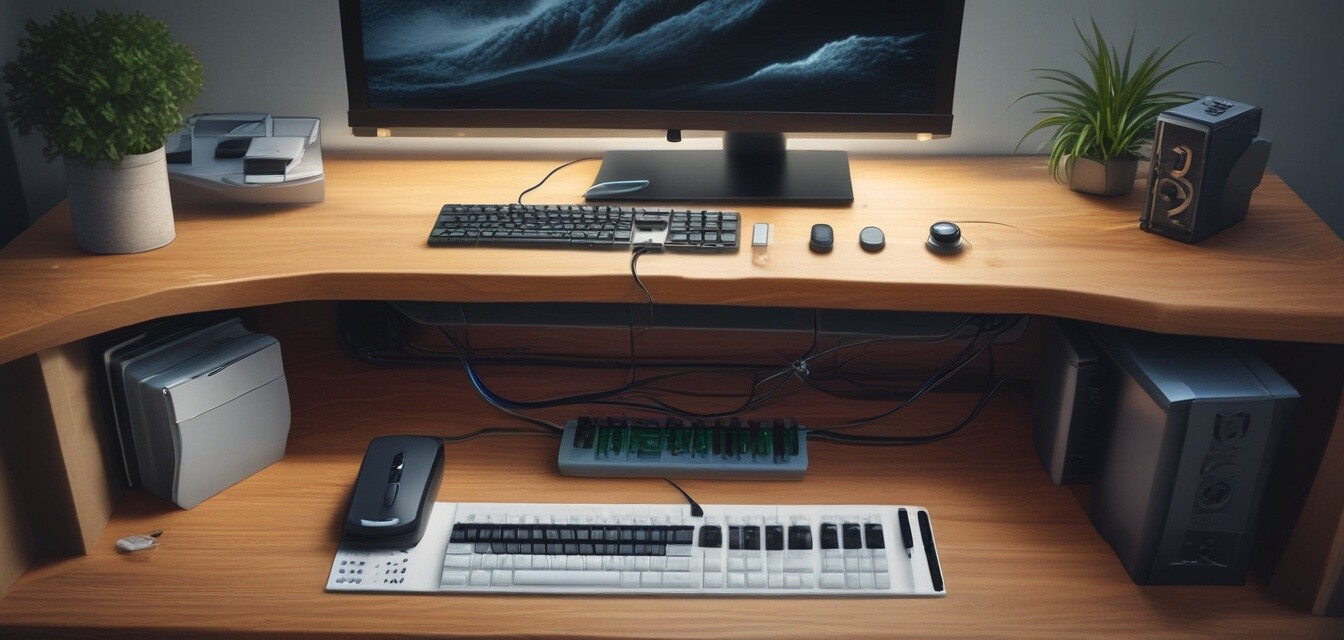
Comparing Different Types of Under-Desk Cable Trays
Key Takeaways
- Under-desk cable trays come in various styles and materials that cater to different needs.
- Effective cable management can enhance workspace productivity and organization.
- Installation methods vary among cable trays, impacting user experience.
- Choosing the right type depends on the amount and type of cables to be managed.
In today’s remote work environment, maintaining a clean and organized workspace is crucial for productivity. A significant aspect of this organization is proper cable management. Among various solutions, under-desk cable trays have gained popularity for their effectiveness. This article compares different types of under-desk cable trays, discussing their features, efficiency, installation process, and usability.
Understanding Under-Desk Cable Trays
Before diving into the comparison, let’s explore what under-desk cable trays are and their primary purposes.
- Definition: Under-desk cable trays are organizational devices designed to hold and conceal cables that run from your desk to power outlets or from one device to another.
- Benefits: They help reduce clutter, improve safety by minimizing tripping hazards, and enhance the overall aesthetics of your workspace.
Types of Under-Desk Cable Trays
Here, we will cover several popular types of under-desk cable trays, detailing their unique characteristics and use cases.
1. Metal Cable Trays
Metal cable trays are robust and durable, ideal for heavier loads.
Pros
- Highly durable and can support more weight.
- Can be customized in size to fit specific spaces.
- Good ventilation to prevent overheating of wires.
Cons
- Installation can be more complex than other materials.
- Heavier, thus may require additional support.
- Can be more expensive than plastic alternatives.
2. Plastic Cable Trays
Plastic cable trays are lightweight and usually easier to install.
Pros
- Lightweight and easy to install.
- Typically less expensive than metal options.
- Available in various colors and designs.
Cons
- Less durable under heavy loads.
- Limited options for size customization.
- May not provide adequate ventilation compared to metal trays.
3. Cable Management Boxes
Though not traditional cable trays, cable management boxes are useful for concealing numerous cables.
Large Cable Management Box
Keep your wires organized with this stylish wire organizer from Homebliss. It features a super large capacity and a protective lid to keep cables hidden and safe.
Learn MoreComparison Table
| Type | Material | Weight Capacity | Installation Ease | Aesthetics |
|---|---|---|---|---|
| Metal Cable Tray | Metal | High | Moderate | Industrial |
| Plastic Cable Tray | Plastic | Low to Moderate | Easy | Varied |
| Cable Management Box | Wood/Plastic | Moderate | Easy | Modern/Decorative |
Factors to Consider When Choosing a Cable Tray
- Cable Volume: Determine how many cables you need to manage to select an appropriately sized tray.
- Type of Installation: Some trays require screws while others may use adhesive or brackets.
- Material: Decide based on the weight and type of cables being managed.
- Aesthetic Fit: Ensure the tray matches your office decor.
Installation Tips
Installing under-desk cable trays properly can make a huge difference in their effectiveness. Here are some tips to help you:
- Measure the space under your desk before purchasing a cable tray.
- Follow the manufacturer’s instructions closely.
- Use the right tools for installation, ensuring a secure fit.
- Consider laying out your cables prior to securing trays to visualize the final setup.
Maintaining Your Cable Tray
Regular maintenance of your cable trays can ensure they operate optimally:
- Periodically check for any loose cables.
- Dust and clean your trays to prevent buildup.
- Reorganize cables as needed to maintain order.
Conclusion
Choosing the right under-desk cable tray can significantly improve the organization and safety of your workspace. Consider the factors discussed in this article to find the best choice for your needs. Whether opting for a sturdy metal tray, a lightweight plastic one, or a stylish cable management box, investing in proper cable management is essential for a tidy home office.
